What Comes After Lean Manufacturing?
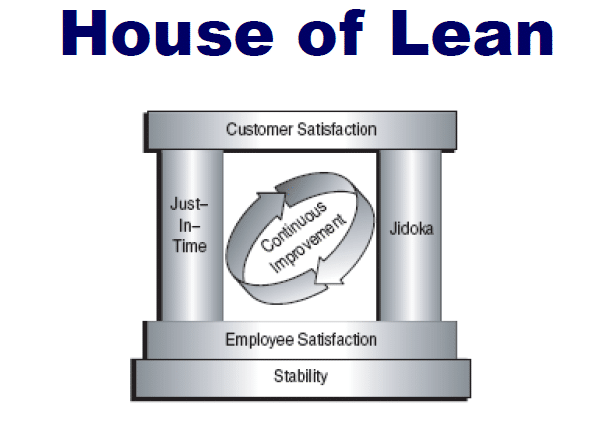
Lean is a journey. If you’re like most companies, your lean journey starts in manufacturing with something simple like a 5-S program and then moves on to more difficult lean tools like analyzing your value streams and then eventually reorganizing your whole supply chain. This is all great stuff but when are you done? What comes after lean manufacturing?
Lean Manufacturing: the Start of Your Lean Journey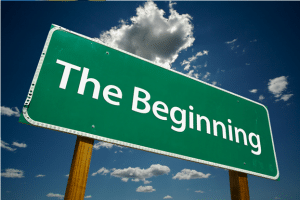
You are just getting started in lean once you have “leaned out” your supply chain. Now don’t get me wrong this is no small accomplishment. An organization may take 10 years or more to get to this point. But implementing lean tools, advancing lean thinking throughout your organization, and starting to get your suppliers and customer to act lean is just the beginning of your lean journey.
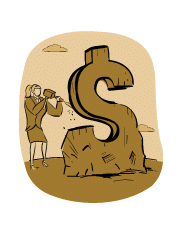 Lean Design and Development
Lean Design and Development
Most of what you see in lean implementation affects manufacturing or production operations. To really drive lean home you have to get beyond implementing lean tools and forge into design, development, and engineering using agile development methods, concurrent engineering, or use critical chain from theory of constraints to manage projects. What’s next?
Lean Accounting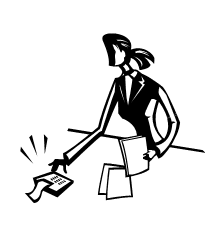
How about talking to accounting about your costing methods, how financial statements are used in developing management profitability metrics, and of course budgeting. Implementing lean accounting will get management to “see the waste”.
In lean, inventory is considered a liability but accounting sees it as an asset. Everyone wants to see a profitable business, yet profit is an accounting number. We pay employees and suppliers in cash not profit.
Cash flow is everything! Your absorption rules (depreciation, accounts receivable, and inventory) need to be examined to understand their influence on management decisions and budgets. This is heady stuff for non-accountants. But wait, there’s more on your lean journey…
Lean Sales and Marketing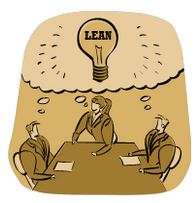
How about sales and marketing? Do you think there is any waste there? You bet, there is a lot of waste in your sales forecasting, sales cycle, and your sales conversion on your sales calls. But wait, did you ever stop and think that your customer service operation is mainly a waste handling operation.
After all, if the customer got what they wanted the first time, would they need to call your customer service to complain about their bill, ask for technical support, or to place an order because your website is so confusing? But let’s not forget marketing. You know the old saying – half your marketing is wasted only you don’t know which half. Yes there is a lot of waste in sales and marketing operations.
What’s next?
Lean Strategy
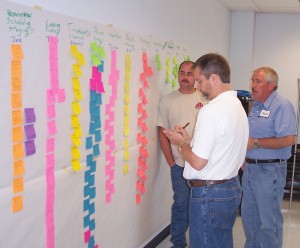
Lean Value Stream Mapping
Lean strategy is what we arrive at when we have leaned out the organization because lean strategy is about taking advantage of all of that capacity that we are releasing and putting it to good use. How do we do that?
By finding new markets, new uses for your products, and new customers bonded to your forward looking products.
Strategy is about vision, driving your competitive advantage that lean has sharpened, and using quality’s sharp edge to slice the competition into pieces. If you terrorize your competition with quality then you have the weapons of the future that your competitors will have a hard time fighting. A lean strategy is a circle acting as both the beginning and the end of your lean journey.
When Can You Stop Becoming Lean?
As stated above, lean helps an organization release unnecessary capacity, which we call waste. Just like a diet program is designed to reduce fat from your body. Fat is just extra calories or stored energy your body is not using.
This is also wasted energy. In business, this wasted energy has many forms: inventory, rework, defects, inspection, overproduction, unnecessary motion, delays, overprocessing, and unnecessary transportation. Lean thinking is like a diet program designed to eliminate this waste.
In bad times you may be forced to do less, and as a result you can use lean to adjust to the recession. But it’s the good times that are more likely to cause your business to gain weight.
When times are good it is just too easy to add people, begin unnecessary work, build inventory, and absorb unnecessary transportation. It is exactly the good times that implementing lean production methods is needed even more.
After Lean Manufacturing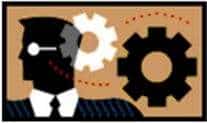
So in bad times you need to implement lean to survive the recession, in good times you need a lean competitive advantage. When can you stop becoming lean? Getting your suppliers and customers to act lean is only the first step in your lean journey. Every part of the business can use lean. Just like a diet program requires you to change your eating habits, forever, you can never stop being lean and transferring lean thinking throughout the organization.














